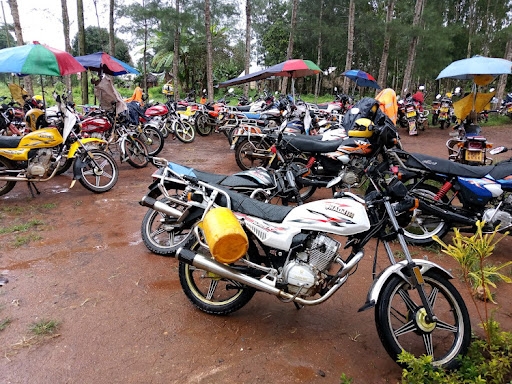Demand for a taste of Kenyan tea is on the rise in China and other parts of the world.
Thanks to the lucrative global market, farmers are now venturing into growing of orthodox tea besides the traditional black tea.
Globally, tea is the second-most consumed beverage after water, followed by coffee, orange juice and beer and soft drinks, such as sodas, wine and vodka.
Kenya is the third-largest producer of tea in the world after China and India, while Sri Lanka is fourth. China is the largest producer as it was first discovered there and is a cultural crop.
Kenya Tea Development Agency sales general manager Francis Muthamia said there has been increased production of orthodox teas.
Orthodox tea refers to loose leaf tea produced using traditional (orthodox) methods, which involves plucking, withering, rolling, oxidation/fermentation and drying.
He attributed this to the high demand for orthodox teas not only in China but in the Middle East, Continental Europe and the Commonwealth of Independent State countries like Russia, Armenia, Kazakhstan, Kyrgyzstan and Tajikistan.
“We have 11 factories and all of them are operating full capacity. We have a plan to roll out another 15 factories in the next one and half years,” Muthamia said.
LINK TO LONG LIFE
Tea Board of Kenya technical officer James Marete confirmed that there has been increased demand for orthodox tea due to a lucrative global market.
He said factories are increasing the capacity to produce more orthodox teas to reduce over-reliance on CTC teas.
“Traditionally, Kenya has been a black tea-producing country. But now the world is turning to Kenya as production of orthodox tea has increased,” he said.
“Buyers are flocking to Kenya in search of the orthodox tea, hence many factories are now factoring into adding another processing line that can make that type of tea. It is something that is now ongoing.”
There are six classes of tea: black tea, green tea, purple tea, yellow tea, oolong tea and puer tea. Kenya predominantly produces black CTC tea (almost 99 per cent black tea).
Marete said Kenya consumes less than seven per cent and exports the rest. More than 20 per cent of the tea consumed in the world comes from Kenya. China consumes most of what it produces.
“I think Kenyans do not consume much tea because they do not understand tea and what it can do to them,” he said.
He said there is a province in China where the average life expectancy is 86 years, and when research was done there, they realised that the daily consumption of tea per person was at least five litres.
MASSIVE EXPORTS
The high demand and growing thirst for black and purple tea from Kenya saw the country export about five million kilogrammes of tea valued at Sh7 billion in 2019.
The United Nations Comtrade database on international trade shows that in 2021, China imported tea from Kenya valued at US$7.95 million.
Tea is medicinal and it is important for health. According to the Tea Research Institute, if you consume more tea, you will be healthier.
He said it also helps to speed up the metabolism in our bodies and to burn fats, so it used to maintain weight by avoiding accumulation of fats in our bodies.
Tea also has an anti-ageing property, especially purple tea, one of the current specialty varieties, and thus people are advised to drink it every day.
Purple tea has similar properties to red wine and blueberry fruit, and the more you take, the better your health.
Bernard Ruto, a farmer from Kericho, grows orthodox tea and has been contracted by a tea cottage industry in Kericho to produce the tea.
“Quality is everything. The best quality can be obtained if we have enough fertiliser in farms and when we pluck them in rounds,” he said.
"I pluck my tea three times a month and I have seen high productivity compared to the ones for black CTC variety. Managing orthodox is one of the easiest because of round plucking, which ensures best quality."
He said the price is higher; he sells a kilo of his orthodox tea at Sh28, which is high.
“I sell 2,000 tea bushes, which give 500kg per month. I am planning to add and have 2.5 acres under orthodox tea, which has 5,600 bushes,” the farmer said.
MORE VALUED
Tea Research Institute director Dr Samson Kamunya said in 2021, TRI raised five new tea cuts for green, white, yellow and black orthodox teas.
He said these teas fetch more than Sh500-Sh600 per kg, compared to black CTC tea cities, which are fetching at an average of around Sh300 to Sh350 per kg.
“We are glad that we are contributing towards the advancement of the tea industry. We also have purple tea, which is slowly being adopted by the industry and market. Farmers are likely to get as much as Sh1,000 to Sh1,100 per kg of purple tea, and those who have already adopted it like our cottage tea processors are already reaping the benefits,” he said.
The institute of Kenya Agricultural and Livestock Research Organisation (Kalro) is mandated to research tea.
According to 2021 tea statistics as per Tea Board of Kenya, the current tea production in Kenya for the CTC tea is 533 million kg and 4.2 million kg for Orthodox teas.
China market absorbs about one percent of this and about 5.1 million kg is exported in China with a value of Sh1.2 billion.
The board says there are various initiatives being carried out in the country to support farmers and help increase production, especially of the orthodox teas, to fully exploit the Chinese market.
Some of the initiatives include building the capacity of farmers to increase orthodox production by offering training on orthodox tea manufacturing skills, providing grants for construction of more orthodox lines and providing market intelligence.











